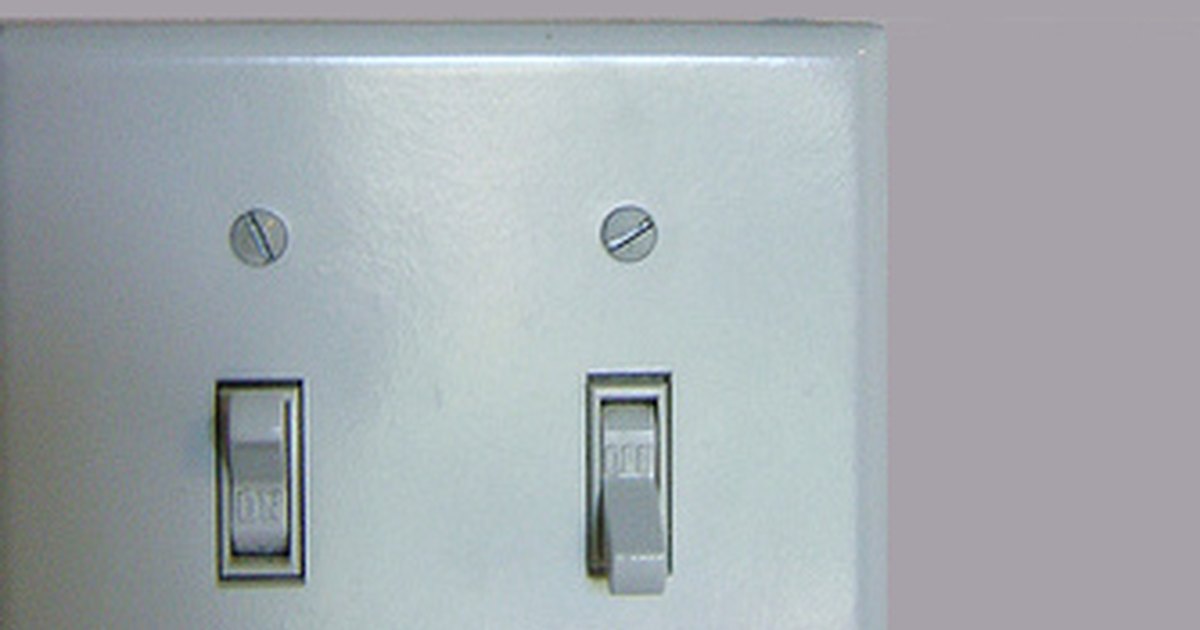

To use this device is not difficult but you must turn all the lighting power off first and take out the fuses so they cannot be turned on by accident. If you have no indication whatever of which three (brown, blue and earth) wires form the switch cable then you will need a circuit tester.

Hopefully, as explained above, they will be labeled with either a piece of brown (or red with old wire colours) tape on the blue (or black) wire, or a small brown or red sleeve. When you have removed your existing fitting, you will need to know which wires go to the switch. The brown and blue (or red and black with old wire colours) wires either side of the ceiling rose are the live and neutral feed directly to the light fitting, in this case they would appear as a flex. The switch simply cuts off the live current. Cable 3 is the switch cable and as you can see more clearly from our diagram in lights and switches this cable interrupts the live flow with a switch. This is where the neutral side of any light fitting will go. The neutrals of cables 1 and 2 are joined together in the neutral terminal block, the left terminal block in this case. The live terminal is fed from the consumer unit and in turn gives live power to the other cables in the circuit, in this case cable 1 supplies the live power from the source or previous light, where it is taken by cables 2 and 3. You can see from the above that the loop wires (all wires in this kind of lighting circuit belong to the lighting "loop") are connected to terminal blocks. When you have removed your existing light fitting and are faced with a mass of cables hanging out of the ceiling, life is a little daunting…But it is not as complicated as it looks. For two and three way lighting diagrams, which can be identified by additional yellow and blue wires within the lighting switch cables, follow the link. With ordinary "one way" lighting, ie one switch controls only one light, the diagrams and explanations below apply. The cable runs from the consumer unit, to the first light fitting in the ceiling of that floor, it enters the ceiling rose where it is looped in and out to feed the next light, etc etc.Īt the same time a cable is connected into the ceiling rose to the switch that controls that light. This fuse, in theory, allows up to 12 100W bulbs to be used on that circuit, in practice no more than 8 are normally fitted. Both of these circuits should be on 5 amp fuses or MCB’s (Miniature Circuit Breakers). One for upstairs lights and one for downstairs. The lights are fed from this via (generally) two circuits. Power comes into the house to your fuse board or consumer unit. (Please note some older houses may be wired differently in junction boxes which will be located under the floor/loft, the principle is the same). The diagram below shows the circuits involved. Not as big a deal to sort out, but first it is important to understand how the lights work in your house. How Does the Lighting Work in Your House? Make sure you mark any wires and cables yourself when necessary. If there is no such labeling, an indicator is necessary. This makes the job of identifying the switch cable easy. The black wire for the switch should have a little bit of red tape around it, or a little red sleeve on it. Both wires, red and black (or brown live and blue neutral with new wiring colours), are live wires in a switch as you will see a little later. Well, 99% of the time one of the black wires belongs to the switch cable that controls that light. Then comes the mistake, they join all the reds together, then all the blacks, earths are connected, switch turned on and "PING" the fuse blows or the trip-switch flicks off. The most common mistake made by people wishing to change their light fittings, eg bulbs for spotlights etc, is that they take down the existing light and ceiling rose without marking or taking note of where all the cables went. Common Mistakes When Fitting Light Fittings See also, our lights and switches, our wiring in wall lights and also our electrical safety projects.

Please also see our project Part P Building Regulations Failure to do this may render your house insurance invalid and you may have difficulty selling your home. Please remember when attempting any electrical installations at home that you are obliged to get the completed job tested by a fully qualified electrician and obtain a minor works certificate. The first rule here is, when wiring a light fitting or changing a light fitting, if you are in any doubt whatsoever, get an electrician – Electricity kills. Please also see our project on the New Wiring and Cable Colours. Warning: To complete electrical works you must comply with Electrical Regulations – Click here for more information.


 0 kommentar(er)
0 kommentar(er)
